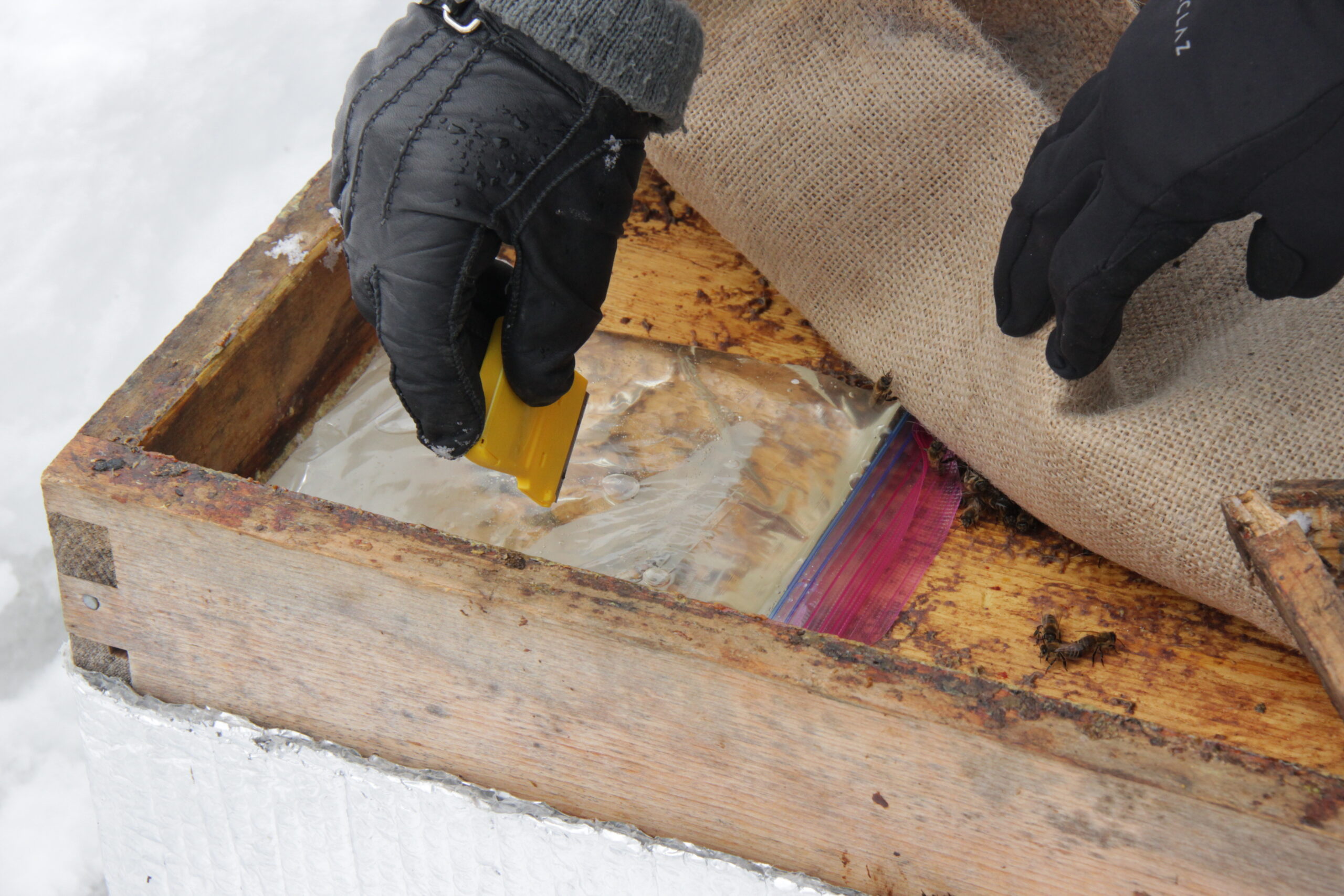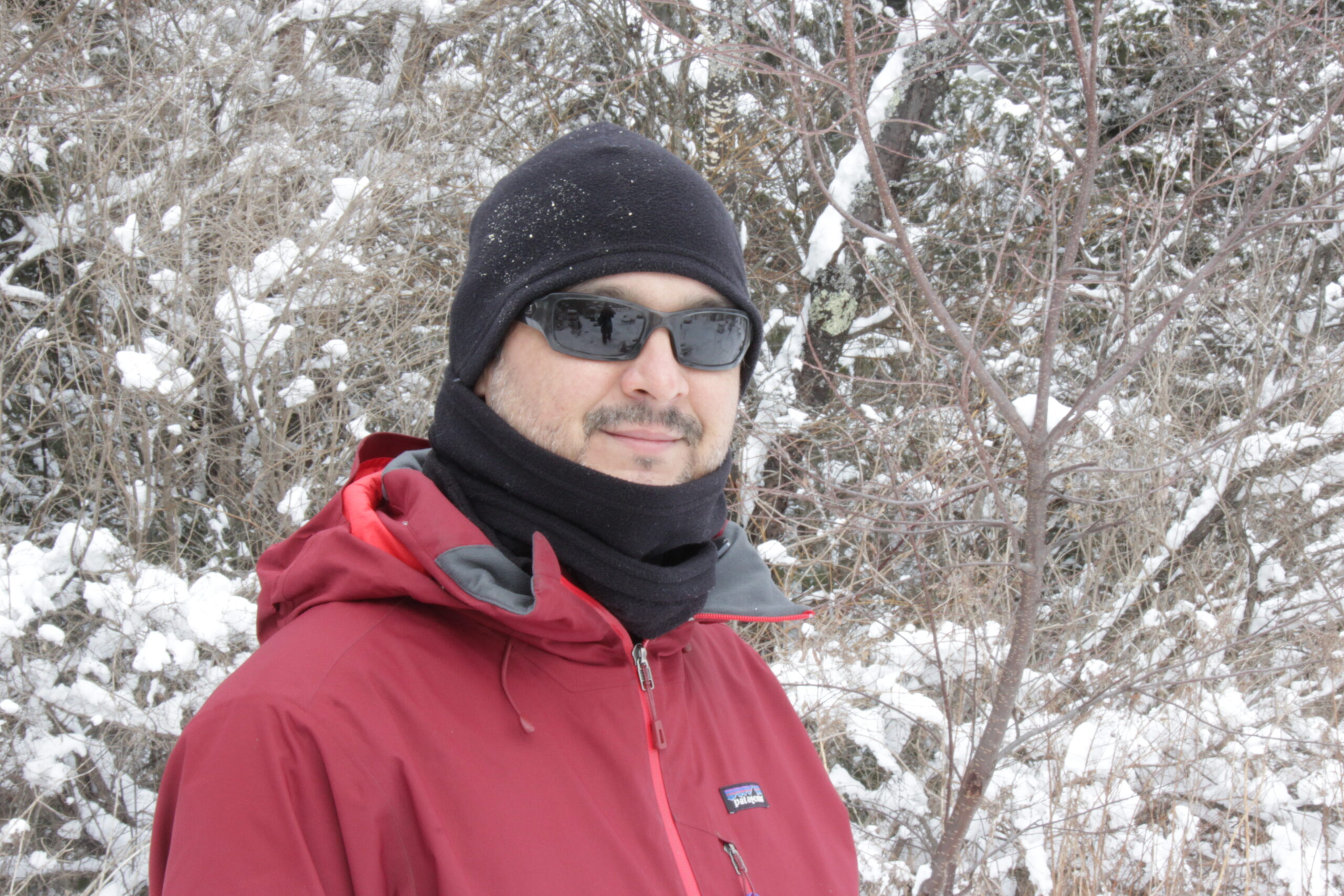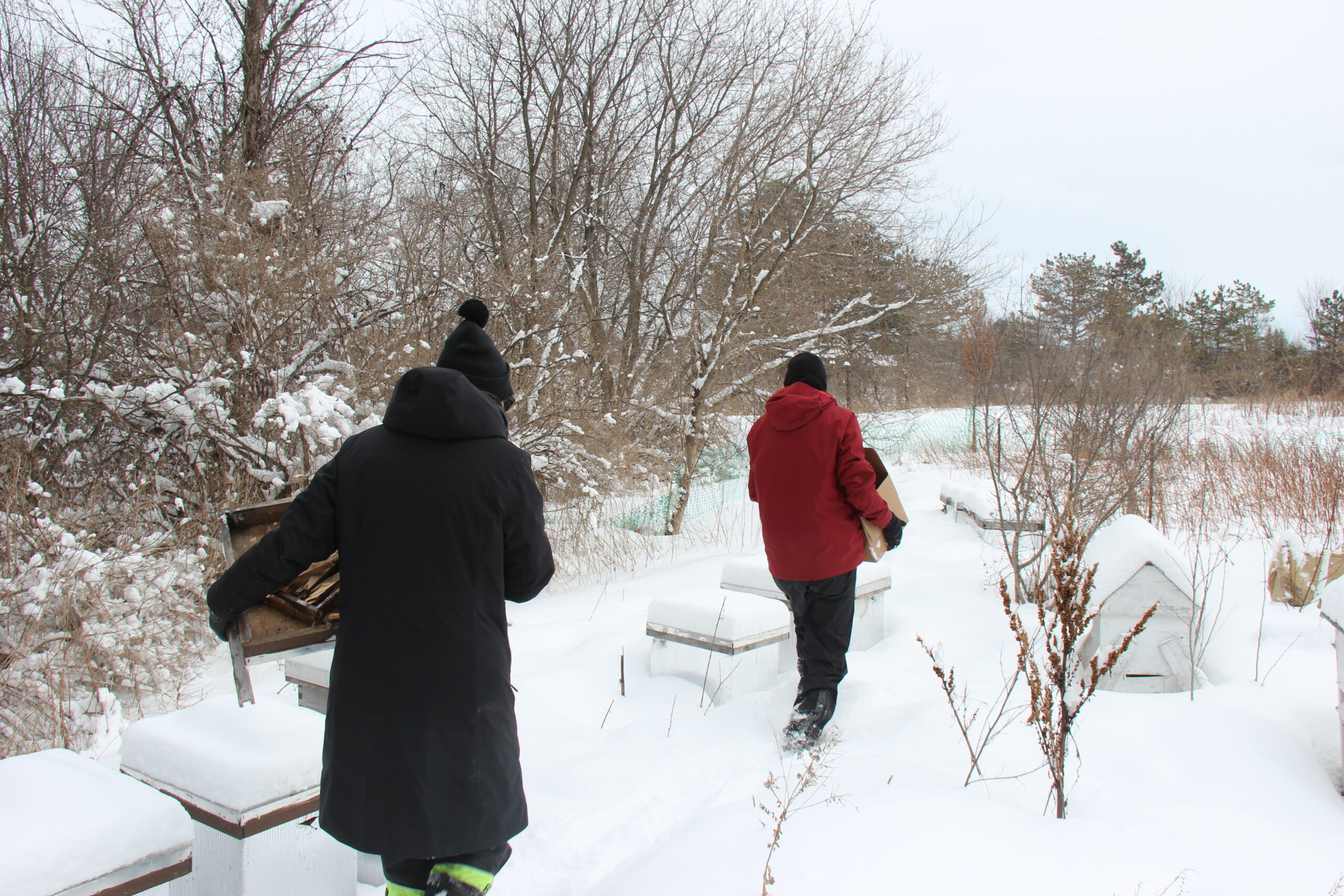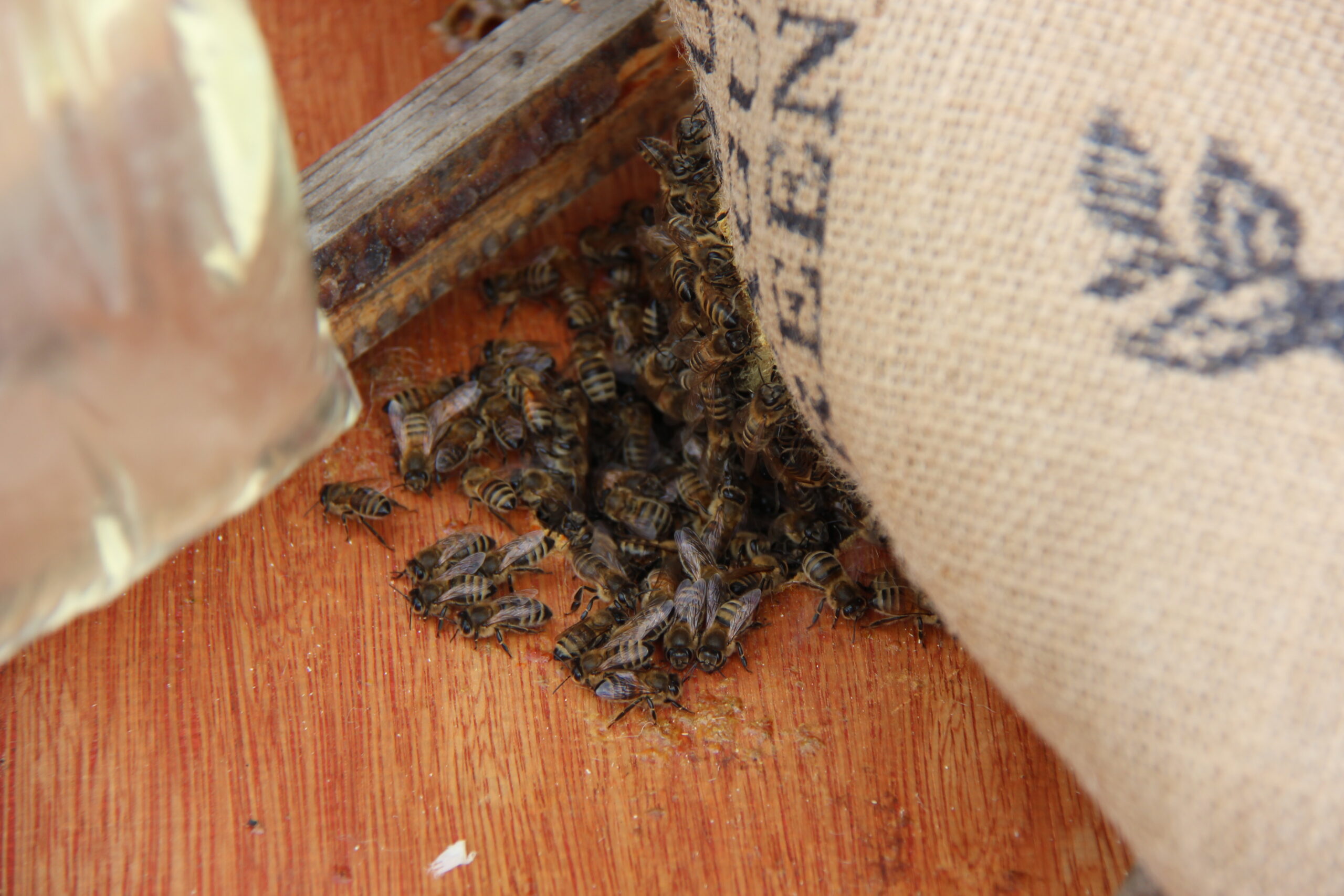Knee deep in March snow, Ron St. Louis placed a bag of water with sugar into a wooden box. His partner, Melissa, made a thin slice along the top of the bag, the sugary liquid beading along the seam. Slowly, the small black and yellow honeybees revealed themselves, the hum of their wings audible in the cold air as they investigated the unusual food source.
Ron and Melissa repeated this process across their 30 hives, taking note of the moisture levels and behaviour of the bees to ensure they’re dry and well-fed.
As climate change has increased human food insecurity, the bags act as a precaution in case the bees can’t make enough honey to survive the winter season.
Capital Bees’ beekeeping operation is situated on Just Food Farm in Ottawa’s greenbelt. Ron and Melissa keep around 30 bee colonies that pollinate a diverse set of crops on the surrounding community farm.
“We try to make sure that [our bees are] eating honey,” Melissa said. “That is what makes us different than commercial beekeepers who will take all the money and give them sugar.”

The partnership between Capital Bees and Just Foods Farm is a beneficial arrangement for both the bees and crops. The increased biodiversity and sustainable practices are key in battling climate change and food insecurity.
Canada’s agricultural sector currently contributes about 10 per cent of Canada’s total greenhouse gas emissions.
To meet the Canadian federal government’s ambitious greenhouse gas reduction goals of 40 to 45 per cent below 2005 levels by 2030 and net zero by 2050, the sector must reduce and adapt.
According to Melissa, the issue is that traditional commercial agriculture farmers may “treat the soil as dead.”
“You put a bunch of poisons in there, kill off the things that you don’t need. Then you have to put things back in to make it do what it needs to do and that’s how you wind up with those kinds of things in your water supply and the food chain,” Melissa said.
According to Melissa, regenerative agriculture is a better alternative because it treats beekeeping as a system.
Regenerative agriculture is a philosophy that views farms as part of local ecosystems. It focuses on rebuilding soil health, water retention and biodiversity above and below the ground.
Some examples of regenerative agriculture include planting cover crops, sustainable crop rotations, such as alfalfa to strengthen the soil with nitrogen and allow livestock to graze and naturally fertilize and pollinate.
“Small local farms are just a lot better and more interesting for biodiversity and for food security. And with climate change, food security is gonna be a big deal,” Ron said.

The community helps share some of the production costs, making it easier for smaller-scale and less experienced farmers to join the sector.
“So much of our food supply is international,” Melissa said. “That’s very vulnerable to things like climate disasters and fuel prices, and also causes climate disasters.”
According to Statistics Canada, about 30 per cent of Canada’s agricultural and food commodities consumed are imported. Researchers estimate these imports result in “food miles,” leading to annual emissions of 3.3 million metric tonnes of CO2.
In the past year, the Government of Canada announced it will invest $550 million over 10 years to help Canada’s agriculture sector meet its emission targets and become more resilient against extreme weather events.
“Canadian farmers are good stewards of the land, but extreme weather this year is yet another stark reminder that they are on the front lines of climate change,” said Canadian Minister of Agriculture and Agri-Food, Marie-Claude Bibeau, in a statement about the spending on March 4.
“That’s why our government is investing over half a billion in new direct supports to farmers for the adoption of more climate-resilient practices and clean technologies,” she said.
Scott Mitchell, a geography and environmental studies professor at Carleton University, explained the effects of climate.
“Things that are an extreme event from a crop or a farmer’s perspective aren’t ones that you notice living in the city. It’s anything that is sort of getting outside the normal range for a growing season in an area,” he said.
Mitchell co-heads Climate Change Extremes & Ontario Agriculture Research at Carleton. The group’s research uses climate data across various regions to determine what areas are at higher risk for certain extreme events.
He stressed the importance of looking at different spatial and time scales.
“For most of Ontario, we don’t see a significant trend in one-day precipitation amounts in the growing season, except in Eastern Ontario,” Mitchell said.
“But, we see in pretty much every Ontario township, we’re getting more frequent five days of significant rainfall in a row, which can be a problem to get out and being able to harvest the crop,” he said.
For Ron’s bees, continual rainfall presents a different issue. Changing weather patterns can prevent his queen bees from flying during specific mating times.
“If my queens are ready at a certain date, they only have maybe a week or two to be able to get out and mate. If you get two solid weeks of rain during that time, well, it’s basically a crop failure,” Ron said. “It’s hard to bounce back from something like that.”

“We’re breeding a better bee,” Melissa said. “Those who have strong hygienic behaviour are better at identifying if there is disease in the hive and removing it from the colonies so that they’re more resilient responding to pests and diseases.”
Much concern must also be given to climate change and its impact on bees, Ron and Melissa explained.
They said they believe the way to move forward through the climate crisis is to look to the bees.
“We’ve seen the tendency when resources become scarce and when times become stressful, that there’s a lot of ‘othering’ that happens. That’s the wrong direction,” Melissa said.
“What we need to do is think about how we can rally around each other and collaborate together to have resilient communities. That’s why superorganisms are so cool because they’ve figured that out,” she said. “It’s not about the individual.”
Featured image by Madeleine Van Clieaf.






